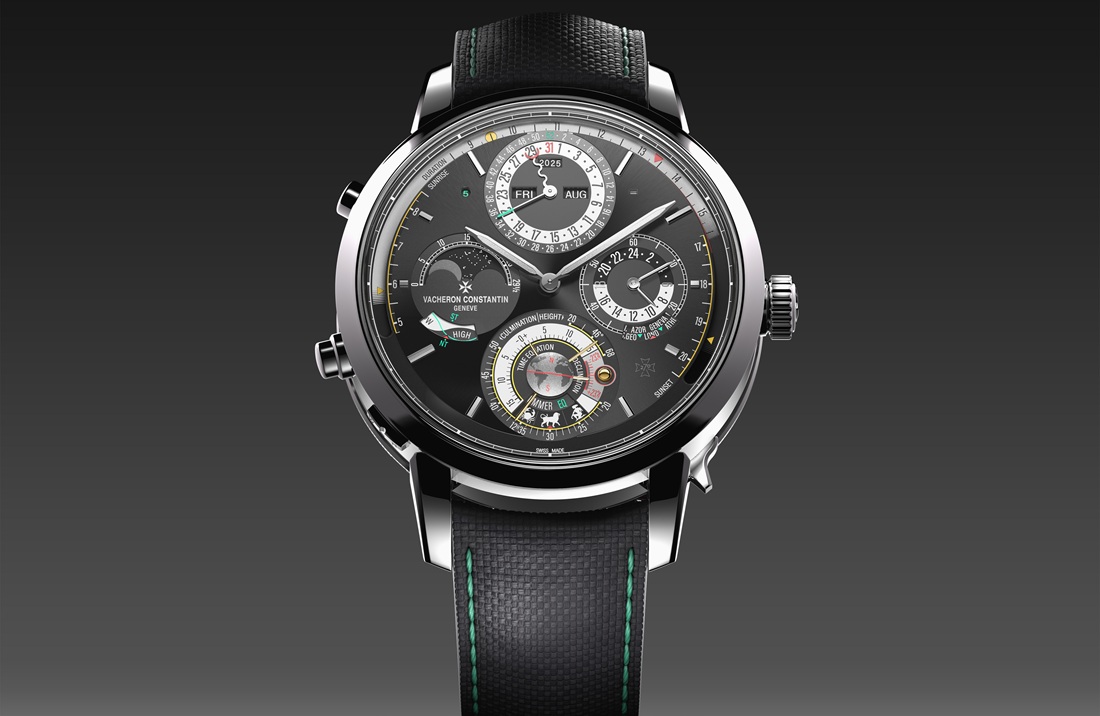
Mechanical Mascot: Cartier Rotonde Grande Complication Skeleton Watch
A watch unlike the vast majority of Cartier timepieces out there, limited to just 30 pieces, this just might be Cartier’s most expensive (non-precious stone laden) watch ever. The Rotonde Grande Complication Skeleton is a unique beast — a fighter in Cartier’s ongoing battle to proclaim itself as a serious watch maker. A battle that Cartier is quickly winning with a slew of complex and beautiful mechanical timepieces that it has been releasing over the last several years.
Cartier watches have a popularity that stem from design. Like a reliable pair of old gloves, “fans of class” know they can always count on Cartier for very respectable, handsome, suitable luxury watches. So why does Cartier feel the need to get increased “horological street cred?” There could be a number of reasons, but one of them is likely about staying competitive. With Cartier’s competition showing off in-house bred mechanical wonders, the French luxury icon must follow suit, and has a compelling interest to beat the competition to maintain its marketing position. To do this Cartier must show its most discerning customers examples of amazing things the brand is capable, in order to preserve its high luxury status. These beautiful watches also make for powerful visuals, showing even basic Cartier watch consumers a glimpse of what is capable within the “brand DNA.” In short, pieces like this are an expression of the concept that in even an entry level quartz movement based Cartier watch, there exists a bit of this intensely complicated mechanical art piece. Projects like this are luxury branding at its finest.
A few lucky people will have the privilege to own (and afford) this incredible model in the Cartier Rotonde collection. The watch has an all hand assembled and decorated Calibre 9436MC movement made by Cartier movement partner Renaud & Papi. Each movement is made from 457 parts and requires around 212 hours of work to complete. Cartier DNA is emphasized in the “C” shaped bridge over the tourbillon. The manually wound movement has a power reserve of eight days, and includes a few technical innovations. While the term “Grande Complication” usually refers to a watch that includes a perpetual calendar, chronograph, and minute repeater, this watch has a slightly different formulation. Sans the minute repeater, the Cartier Rotonde Grande Complicate Skeleton features a monopusher chronograph and well as a unique “jumping hand” perpetual calendar.
A monopusher chronograph uses a single pusher to cycle through the various functions of the chronograph mechanism that includes “start, stop, and reset.” This single pusher layout is considered more complex than the traditional two pusher chronograph layout. Even more technically challenging is the jumping hand perpetual calendar. Most calendar mechanisms have discs and hands that gradually move into position. Jumping hands quickly move into position the moment information is due to change. Such immediate motion is very complicated to engineer because it requires quick bursts of energy from the mainspring where power is stored for the movement. This complicated feat was mastered be Renaud & Papi, and applies to the day, date, month and leap year indicators on the dial.
In addition to having a tourbillon, monopusher chronograph and jumping perpetual calendar, the 9436MC movement has been completely skeletonized for an immaculate view of the movement’s operation. This gives the dial an impressive stance, overlaid with traditional looking Cartier blued steel hands. The watch is set in a 43.5-mm wide case crafted entirely from platinum. The crown, also in platinum, has a sapphire crystal cabochon. Each of the 30 pieces in this limited edition are priced at $510,000. www.cartier.com.
1. 43.5-mm wide platinum case
2. Cartier “C” shaped tourbillon bridge
3. Sapphire cabochon in platinum crown
4. Perpetual calendar and chronograph subdials
5. Highly skeletonized, hand decorated movement
6. Spiral shape “movement operation” indicator
Ariel Adams is the Haute Living Watch Editor and also publishes the luxury watch review site aBlogtoRead.com.
 SIGN UP
SIGN UP











